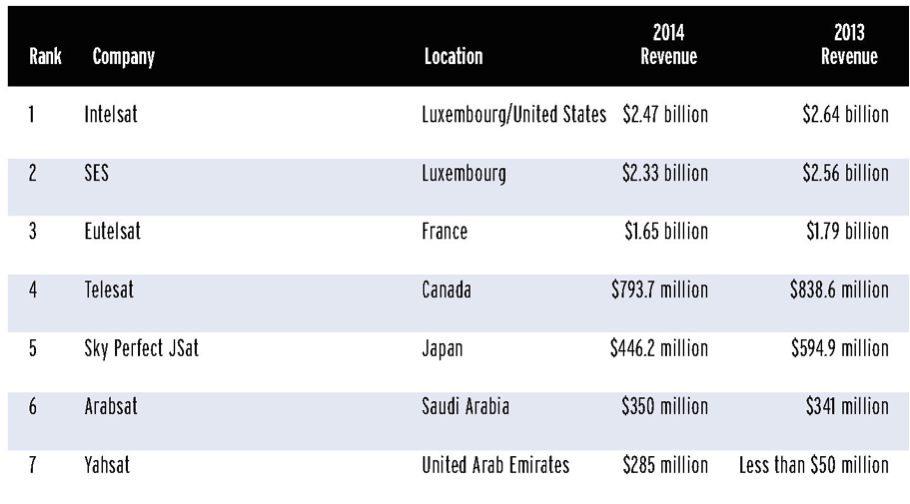Why Revenue per Bit is the "Fill Rate" of the HTS World
Sep 3rd, 2015 by
Prashant Butani, NSR
Fading Relevance of Fill Rates
Fill Rates have been a tried and tested metric in the
widebeam satellite world; a look at fill rate and EBITDA margins
reflects the financial health of a satellite operator. Yet, this
performance indicator falls short when it comes to High
Throughput Satellites and is of almost no meaning in the Non-GEO
HTS world of the future. Firstly, spot beam architectures carry
an inherent inefficiency in terms of total vs. usable bandwidth.
Most HTS operators are uncomfortable disclosing usable bandwidth
because it could reveal weakness against competition. As a
result, any fill rate figure is questionable as to whether it
applies to total or usable bandwidth. Furthermore, many HTS
operators offer managed services (not raw capacity) thus making
utilization irrelevant. Until, of course, it actually saturates
individual beams and one must stop adding customers to avoid
contention issues.
Revenues are King…until Margins attack
As of the end of 2014, the Big 3 (Intelsat, SES and Eutelsat)
reported combined revenues of about $6.8 Billion against roughly
3,600 leased TPEs. Considering a 2:1 Bits/Hz ratio, this puts
their Revenues per kBit leased between $20 and $30, reflective
of the premium that widebeam transponder leasing commands. If we
consider 3:1 Bits/Hz, that figure comes down to $15-$20 of
Revenue per kBit leased. All this against a fill rate of 70% or
higher for the fleets.

Source: SpaceNews
Avanti and Yahsat, on the other hand, together have approx.
40 Gbps of HTS bandwidth in orbit. Their revenue figures of
about $70 million and $285 million respectively, as reported by
SpaceNews, place them in almost the same range; i.e. $20 to $25
of Revenue per kBit leased. And this considering that Avanti
last spoke of fill rates of a “measly” 20%, while Yahsat may be
somewhat higher. Seems a bit strange that on a Revenue per Bit
leased basis, Yahsat and Avanti seem to be at par with the likes
of Intelsat and SES even if it is at a much smaller revenue
base.
If one were to judge these relatively young, largely HTS-only
satellite operators by the fill rate metric, they would be
considered as having a long way to go, and in many ways they do.
Yet Yahsat is now number 7 of the Top 26 FSS operators globally
with a grand total of 2 satellites in orbit. Sustaining
this Revenue per Bit leased and building on the topline is the
challenge, and that is where the expectation is that
the market demand will hold up. That expectation is universal
though and applies to both an Al Yah 3 as much as it does to an
EpicNG.
Bottom Line
Fill rates are important when an operator only has to sell
raw bandwidth in MHz. Operators have graduated to selling
contended (or dedicated) services with packages in Mbps and
download caps. Here, the more inventory one has available, the
better your control on quality of service and user experience.
What matters is that you have customers, that they buy premium
packages and pay their bills on time. In other words,
the race is to build revenues at a high, or healthy, Revenue per
Bit leased. If they start dropping prices, eventually
poor margins will catch up. However, if investors have faith in
the business and the management can grow customers smartly, the
returns are promising. Clearly the relevance of fill
rates reduces as you build bigger HTS satellites and more so
with LEO-HTS constellations. What matters is keeping
the Revenue per Bit leased at a level such that about half way
into the lifetime of your satellite, an operator has enough cash
flow to pay for the next one.